Yuanxiao and tangyuan – glutinous rice balls stuffed with a range of fillings – are a must for the Lantern Festival (Yuanxiao Jie 元宵节) on the 15th of the first lunar month, or the first full moon of the new year. But since my family never gets tired of anything involving glutinous rice, we’ve already gone through several rounds of yuanxiao (purchased) and tangyuan, made by my grandmother. And as much as I love yuanxiao, nothing can beat my grandmother’s tangyuan.
Her fillings, for example, go beyond boundaries: Black sesame? Red bean? She combines them both, so the red bean paste is not cloyingly sweet. And then she adds walnuts, generous chunks of them: I dare you to find a Beijing vendor who uses as many walnuts as she does.
This year I too decided to make a few batches of tangyuan myself. It was surprisingly easy, and I ended up getting carried away with several variations: Traditional tangyuan, black rice tangyuan, and a combination of both – marbled black-and-white tangyuan.
The instructions below may look complicated but it’s really not. There is a trick to getting your tangyuan skin to be glutinous, sticky, chewy, and easy to handle, so if the yuanxiao from Beijing’s traditional pastry makers aren’t enticing enough, you can try your hand at making your own!
The Dough
Tangyuan dough with glutinous rice flour
200g (just over 1 cup) Chinese glutinous rice flour **
150g (5/8 cup) water
1. Mix the dough: In a medium bowl, mix the flour and water, adding the water in batches. Hold back the final few tablespoons of water – when the flour starts to come together, add only enough water to form a smooth and workable dough.
2. Tip for more mochi-like, glutinous tangyuan: Break off about 1/4 of the dough (the exact quantity doesn’t matter), and flatten it into a round disc. Bring a pot of water to a boil and add the small round of dough, and simmer on low until it floats. Remove the dough, let it cool a little, and knead it back into the main dough. This will help the tangyuan to be particularly chewy, sticky, and mochi-like.
At this point, you can use the tangyuan dough right away, or you can let it rest in the fridge for a few hours.
**It is actually a bit tricky to recommend an absolute ratio of glutinous rice flour to water for tangyuan, as it all depends on the make-up of one’s rice flour. In China, the glutinous rice flour available to consumers generally has some quantity of regular rice flour already mixed in, to make it easier to work with. In the US, we usually buy pure glutinous rice flour from a Thai brand, and substitute about 15-20% of the glutinous rice flour with regular rice flour – otherwise, the dough would be ridiculously sticky!
Variation: tangyuan dough with black rice flour
110g black rice flour (黑米粉 heimi fen)
10g rice flour
20g glutinous rice flour
80g water
Follow the same instructions as for the original tangyuan.
The Filling
Black Sesame (黑芝麻)
- ½ cup ground black sesame seeds (can be bought here)
- 1/3 cup sugar
- 3 tablespoons roasted sesame paste (麻酱 majiang; more info here)
- 1 teaspoon cornstarch
Combine all ingredients in a small bowl. You can use filling as is, scooping as you go, but I prefer to pre-shape it into balls, using a 2 tsp measure. The filling can be used immediately or chilled in the fridge.
Variation: Black sesame and red bean paste
5/8 cup ground black sesame seeds (60g)
6 tbsp red bean paste (120g)
1 tbsp sesame paste
Follow same instructions as above. You can add walnuts as well.
To form the tangyuan
1. Shape the wrapper (the tangyuan skin): Tear off a nugget of tangyuan dough, approximately the size of a small whole walnut. Roll it gently between your palms until it is a sphere, then gently flatten it, pulling gently on the edges, until it is about 2.5 inches / 6cm in diameter.
2. Add the filling: If you pre-shaped the filling into balls, place one into the center of the dough. Or diroughectly spoon some filling onto the center of the dough. The actual size should be determined by the size of the tangyuan wrapper and your confidence: add more if you think you can wrap it all in, less if you’re new at this.
3. Seal the edges: Bring up the sides of the wrapper around the filling – the edges may not completely meet, and you will have to smooth out excess dough in certain parts to fully enclose the filling. Gently pinch the seams closed and smooth out the tangyuan, rolling it between your palms until it is a round sphere.
4. Repeat until all the tangyuan dough is used up. Then you can eat the leftover filling with a spoon! (This is my favorite part.) If you have excess dough, you can freeze it for next time or form smaller rice balls (the size of marbles) to cook along with the tangyuan. (In fact, it is the tradition in some parts of China to make “solid” tangyuan without filling to cook in a sweet soup of osmanthus flower or to dip in sugar.)
Variation: Marbled black and white tangyuan
It’s very easy to make marbled black and white tangyuan: tear off a small piece of white glutinous rice dough, flatten it into a round, and do the same with a small piece of black rice flour dough. Lay the two dough rounds on top of each other (it doesn’t matter in what order), and roll it all up into a smooth sphere – as it rolls the two colors will swirl into each other. Gently flatten into round wrappers, and follow the rest of the instructions.
Cooking the Tangyuan
Congratulations! You’ve made your own tangyuan. They can be cooked and eaten right away, or frozen for later. I usually put them into the freezer spaced far apart on a plate or a tray (to prevent them from getting stuck together); once they’ve frozen hard they can be placed in a zip-lock bag.
1. To cook the tangyuan, bring a pot of water to the boil. Add the tangyuan one by one, stirring gently. When the water returns to a boil, turn the heat down to low and simmer, stirring intermittently so the tangyuan don’t stick to each other or the bottom of the pot.
2. They’re ready to eat once they’ve expanded in size and have floated near the surface for 1-2 minutes. It will take around 10 minutes, plus a few more if you’re cooking from frozen.
3. Serve in small bowls, with a little cooking water, with at least 4-5 tangyuan to person. These instructions made around 20 tangyuan.
4. Variations: The tangyuan do not have to be cooked in plain water – you can add slivers of ginger and brown sugar for a warming wintry broth, or jujubes (Chinese dates) and goji berries for some color. Or you can use a base of lightly fermented glutinous rice wine – jiuniang (酒酿) or laozao (醪糟), depending on where you’re from in China. The rice wine is lightly sweet and fragrant, and helps to make it much more substantial. You can also top the tangyuan with roasted peanuts. Chengdu people like to eat their black sesame tangyuan with a small dollop of sesame paste on the side.
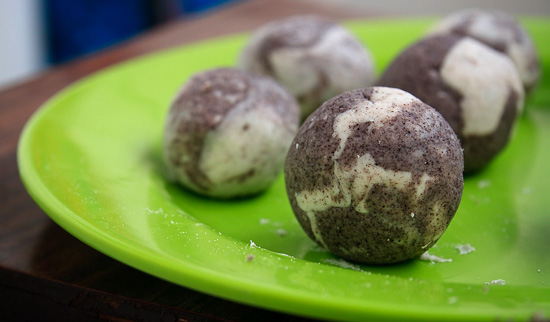
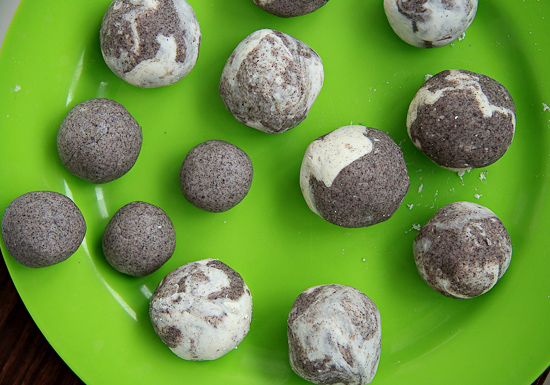
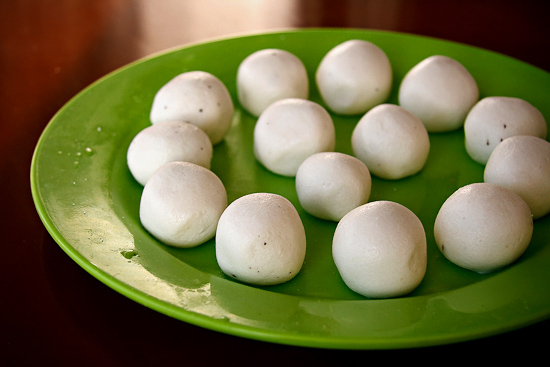
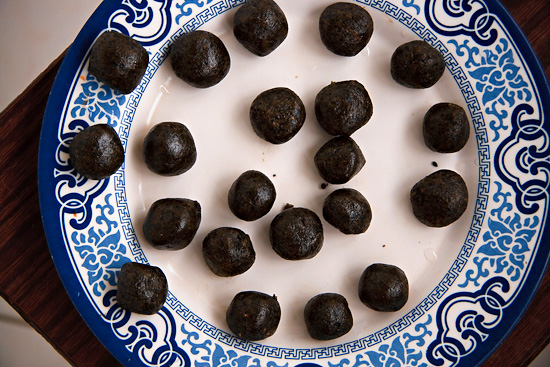
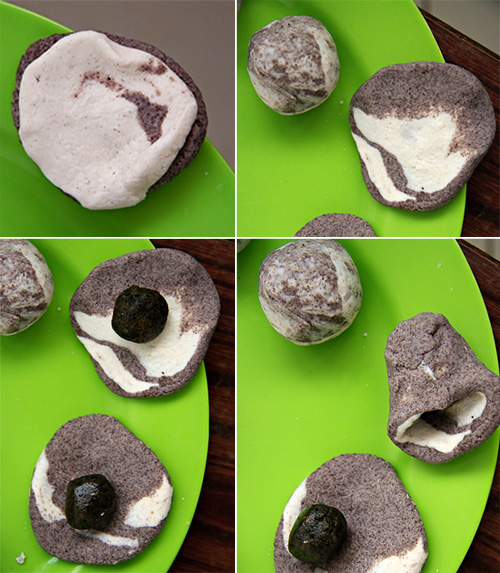
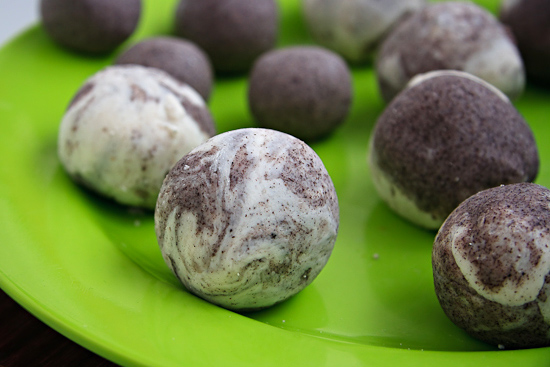
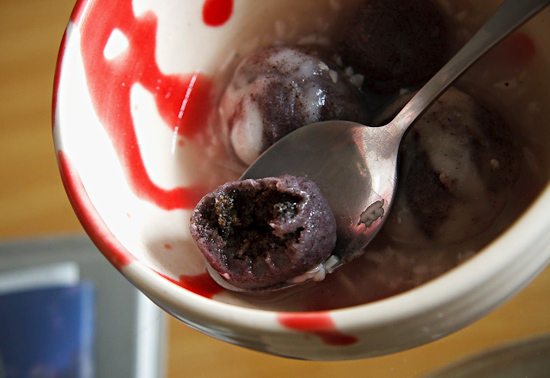
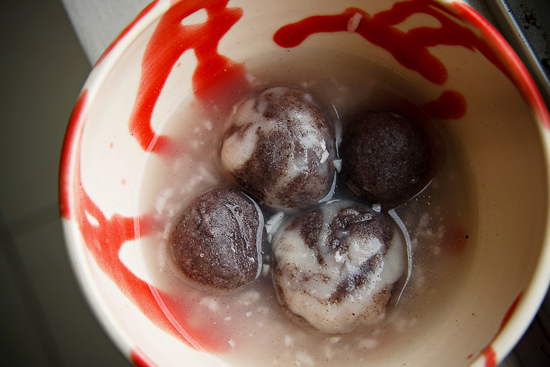


































I love making my own tangyuan! I always make sure the sesame filling to dough ratio is super high :)
Beautiful pics and great content, I’m a big fan of the site!